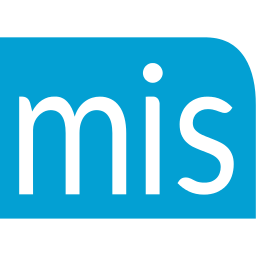
If you are a regular reader of my blog, then you know I work in a variety of industries and with many different companies in those industries. At first, when new companies are going to engage with me, some will ask what kind of experience I have in their specific vertical. My answer is always the same: sales skills and best practice selling techniques are transferrable. Core inside sales skills and strategies work in all industries (that is why they are foundational) and can be adapted to work effectively in other industry.
And this is especially true in the legal field. For over a year now, I’ve been training some of the largest and most successful legal firms in the country and helping their intake teams dramatically increase their conversion percentage of inbound leads.
The clients I have worked with have seen as much as a 30% increase and more in conversion percentages using the proven inside sales skills and techniques I’ve perfected over the last 30 years. I’m going to list three of those techniques below, and I want you to ask yourself how many of these techniques and skills you (or your team) currently use when selling your product or service over the phone.
Skill One: Build rapid rapport with your prospect. In the legal industry, the calls are inbound—for the most part—and while you might think this would make them easy to handle, for some reason many of the intake specialists handling these leads treat them very much like a cop who pulls you over would. “It’s all about the facts, mam.”
You’ll hear many intakes start with, “And what is your name?” “Address?” “Phone number?” “And what happened?” etc.
The first thing I recommend to the teams I work with is to get on a first name basis with the caller. It starts with, “And may I call you by your first name? Great. And my name again is….”
Getting personal as soon as possible builds a bond with the caller and this instills trust. And trust is crucial for converting any sale.
In addition, there is a surprising lack of ongoing warm, of empathy, and genuine concern. Just little phrases I introduce make a huge difference in the overall feeling of the call and, more importantly, in getting buy-in from the caller. Things like:
“I’m so sorry you had to go through that!” And:
“Well you’ve called the right firm today, and I’m going to do everything I can to take care of you. Now let me ask you…”
These—and many other phrases and statements—instantly build rapport and trust, and this sets the tone for building investment throughout the call.
Skill Two: Getting the caller to act during the intake to increase their investment in the intake process.
This is an important component in any sale, but especially true in intake. The more things you have the caller do, the more invested in the intake and in your firm, they are.
Some of the things I recommend are:
- Getting the prospect to take down your name and phone number early in the call.
- Getting your prospect to send you any pictures of the accident or any paperwork they have.
- Having your prospect commit to directing any calls from an insurance company to their attorney at your firm.
These, and many other things, add up to making your prospect feel like they are already a client by the time you direct them to sign up with your firm.
For those of you in other industries, how many things do you ask your prospect to do? How can you invest them during your call or presentation?
Skill Three: Being prepared for the inevitable questions and objections at the end of the intake. As those of you who have read my latest book know, the secret to sales is knowing and being prepared for the stalls and objections that come at the end of your presentation. And it’s no different in intake.
Common objections and reasons that callers use not to sign right then include:
- I want to think about it.
- I want to talk to my spouse.
- Your fees are too high.
- I’m at work and can’t sign right now.
- Etc.
Sound familiar? They should because these are the same objections all sales reps get at the end of their presentations!
The way I help legal intake teams crush their competition is the same way I help other industries succeed: by developing best practice scripts to deal with these objections and stalls. And they work!
There are a lot of other techniques and skills I teach in my intake training, including solid customer service skills (it’s amazing how poorly intake reps handle the little things like putting people on hold!), building value in the law firm, creating trust and confidence, getting buy-in and investing the prospect during the intake process, disqualifying cases so as not to waste time on cases they don’t even want, and many others.
But the bottom line is still the same for the legal industry as well as any other: Sales is a set of skills that can be learned, and, if applied consistently, dramatically increase the conversion of leads.
And isn’t that what we’re all after?
** If you have a law firm—or know of one that needs help in maximizing their conversion percentage—then visit my website that is specific for the legal vertical: http://intakemastery.com/
Or call our office: (919) 267-4202.
I look forward to working with your team in converting more leads—regardless of the industry!
